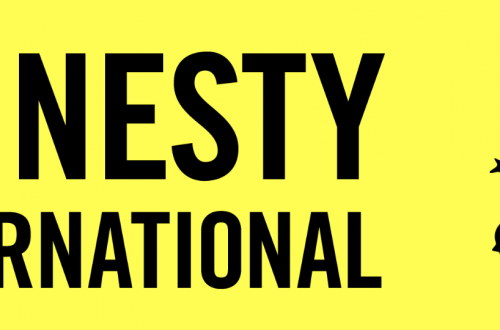This is a guest post by Kolya
In 1960 A. S. Neill published Summerhill, his highly influential account of his educational philosophy, and of the school he founded in 1921 in which he put that philosophy into practice. In the book he wrote:
In our educational policy as a nation, we refuse to let live. We persuade through fear. But there is a great difference between compelling a child to cease throwing stones and compelling him to learn Latin. Throwing stones involves others; but learning Latin involves only the boy. The community has the right to restrain the antisocial boy because he is interfering with the rights of others; but the community has no right to compel a boy to learn Latin – for learning Latin is a matter for the individual. Forcing a child to learn is on a par with forcing a man to adopt a religion by act of Parliament. And it is equally foolish.
I learned Latin as a boy – rather I was given Latin books to learn from. As a boy, I could never learn the stuff because my interests were elsewhere. At the age of twenty-one, I found that I could not enter the university without Latin. In less than a year, I learned enough Latin to pass the entrance exam. Self-interest made me learn Latin.
Some thirty years after that book first appeared, my partner and I were looking to the future and thinking about applying similar ideas to those expounded by Neill, to the education of our as yet unconceived children. To this end, we set about creating a community of like-minded families who could collectively bring a broad range of experience and skills to bear on the task of providing a non-coercive style of education for our children.
As part of that effort I wrote an article explaining our thinking, which I offered to the then Guardian Woman’s Page. The article was rejected, and the community we were trying to build failed to materialise at that time.
But our daughter did materialise, and we did bring her up and educate her in the spirit adumbrated in that article, which is reproduced below.
Choosing Creativity
Kolya Wolf, 1991
Isaac Newton said of his life’s work:
I do not know what I may appear to the world, but to myself I seem to have been only like a boy playing on the sea-shore, and diverting myself in now and then finding a smoother pebble or a prettier shell than ordinary.
It is not just scientists who cherish a childlike quality of mind. So do artists, entrepreneurs and indeed anyone whose stock-in-trade is originality and creativity. Given its importance in so many walks of life, it is worth asking: where does it come from and, more particularly, where does it go?
As every parent soon discovers, babies and young children are almost indefatigable in their endeavour to learn about the world. They are endlessly inquisitive, using all their senses to probe and analyse every object that comes within their reach. They are also amazingly creative. One of their earliest accomplishments – the acquisition of language – staggers the imagination when viewed as the philosophical, scientific and linguistic achievement that it truly is. Once they can speak, children become quite remorseless in asking questions about every conceivable topic.
But as they grow older, children’s creativity and passion for learning gradually dissipate, and by adulthood have mostly disappeared. Adults may learn if their job demands it, but otherwise they have little interest in, and indeed often an actual antipathy to, learning. Creativity, if present at all, tends to be confined to hobbies.
This loss of curiosity and creativity is so commonplace that we think it natural. But is it? Rather than acquiesce in it so easily, should we not be asking why it occurs and whether there is anything that parents can do to prevent it? A possible starting point is to look more closely at the comparison between children and scientists. Is it possible that children are not just like scientists, but that in the manner of their learning to understand the world, they actually are scientists? If so, it may be worth looking to the process of scientific discovery – how it succeeds and how it fails – for any insights it might have to offer.
The growth of scientific knowledge is like a never-ending ascent of a spiral staircase of conjectures and refutations. Each loop of the ascent starts with the scientist’s curiosity being engaged by some problem or anomaly in his comprehension of the world. Next comes the step most demanding of creativity – finding an idea that might solve the problem. The scientist then impartially compares, criticises and tests the new conjecture with respect to his existing knowledge. If it survives this ordeal it is tentatively adopted as a working hypothesis and its rivals are discarded. If it fails, for example by wrongly predicting the outcome of an experiment, it is deemed refuted and is itself discarded. Throughout this process, the scientist’s motivation is not a desire to promote or discredit any particular idea but simply the joy of discovery, and the hope that however many problems he resolves, another one will always be waiting for him just around the corner.
Together these steps constitute the “scientific method”. So long as the scientist adheres to it in practice, it does not matter whether he does so consciously or unconsciously. But deviating from it for whatever reason bodes ill for his chances of success. Probably the most famous attempt at perverting the scientific method was the Catholic Church’s persecution of Galileo for his advocacy of Copernicus’ theory that the Earth revolves around the Sun. Galileo was tried, imprisoned and forced to recant. In the words of Jacob Bronowski “The effect … was to put a total stop to the scientific tradition in the Mediterranean.”
A more recent example was the so-called Lysenko affair, which occurred in the Soviet Union some fifty years ago. Stalin adopted, as a matter of state policy, a theory of genetics that by then had been scientifically discredited. This theory was taught in Soviet schools and universities for an entire generation, causing massive damage to Soviet agriculture and stifling progress in the biological sciences.
These examples illustrate the dangers arising, respectively, from the proscription and prescription of scientific ideas. Such practices are liable to cause two distinct kinds of damage. As a consequence of being shielded from criticism, the resulting ideas have a tendency to be false. Moreover, denied the rational option of discarding these entrenched ideas, scientists may be obliged to warp their other theories in order to fit in with them. The more elaborate this act of mental contortion becomes, and the longer it is sustained, the more severe is the resulting intellectual blight. Under such circumstances it is not surprising that most scientists find their continuing adherence to the scientific method a personal liability and tend, instead, to do whatever it takes to accommodate the authorities. This may well be the best course open to them, but it is incompatible with their making further scientific progress.
So what lesson can we draw from this about how best to safeguard our children’s natural curiosity and creativity? Reflecting on his own school experience, Albert Einstein said:
One had to cram all this stuff into one’s mind, whether one liked it or not. This coercion had such a deterring effect that, after I had passed the final examination, I found the consideration of any scientific problems distasteful to me for an entire year … It is in fact nothing short of a miracle that the modern methods of instruction have not yet entirely strangled the holy curiosity of enquiry; for this delicate little plant, aside from stimulation, stands mainly in need of freedom; without this it goes to wrack and ruin without fail.
Equating the capacity for scientific enquiry with a child’s natural curiosity, Einstein concluded that the extinction of this “delicate plant” is caused by the coercion of children by adults.
But why are children coerced in the first place? Young children usually have unfettered control over their learning, subject only to their physical limitations and to restrictions imposed for their own safety. But as they get older, their free-ranging way of learning is increasingly likely to bring them into conflict with their parents. This is because conventional wisdom dictates that, beyond a certain age, the course of a child’s learning must be controlled by adults. This conflict is normally dealt with by the children being forced to conform to the wishes of their parents and other adults. Perhaps the most blatant example in our society of such coercion is the custom of forcing children to go to school. Here the method of learning, which has served them and science so well, is systematically suppressed in favour of a programme of instruction that is simultaneously proscriptive and prescriptive.
The effect of this coercion on children is the same as it was on the scientists caught up in the Galileo and Lysenko fiascos. In the face of overwhelming pressure children suppress their natural, scientific method of enquiry, in favour of conformity and appeasement. Impairment of their creativity is the inevitable consequence. Although the powers that be can command the obedience of a child, they cannot command the universe to reveal its secrets to someone who has been forced to stop thinking for themselves.
If schools could teach children everything that they will need in later life, the loss of creativity would not be so important. But the ability to solve any kind of problem requires some degree of creativity. Most adults utilise only a tiny fraction of the creative potential they had as children. This limits both their personal growth and their usefulness to society at large. The capacity for flexibility and originality has always been conducive to finding fulfilment in life. But in our rapidly evolving society such attributes are becoming essential. As our economy becomes more knowledge-based, employers will increasingly need people capable of creative thought, rather than just well trained human automata.
What can we do to reduce the coercion of our children? We can give them more responsibility and control over their own lives, backed up by our interest, encouragement and advice. Some parents may want to take this to its logical conclusion and make it a cornerstone of their family’s interactions that their children’s autonomy should not be infringed – trusting instead that, given sufficient goodwill, conflicts within the family can be resolved by mutual consent. But even for families who do not want to go this far, it remains true that every bit of control retained by their children increases the likelihood that the fount of their creativity will survive into adulthood.
Applying this to children’s education means, in the first instance, allowing them more control over their relationship with school. Some parents achieve this by allowing their children the choice of being educated at home. This option is open to any family that wants to give its children a large measure of control over their education. But even a more limited increase in children’s intellectual autonomy, if promoted consistently, is likely to result in their developing a deeper understanding of their preferred subjects. They may, of course, also do less well in the subjects that they find less interesting. But is it not better to forgo a few facts, than one’s creativity? Provided that one retains a childlike attitude to learning, factual knowledge is easy to acquire when it is needed. The ability to think creatively is irreplaceable.


